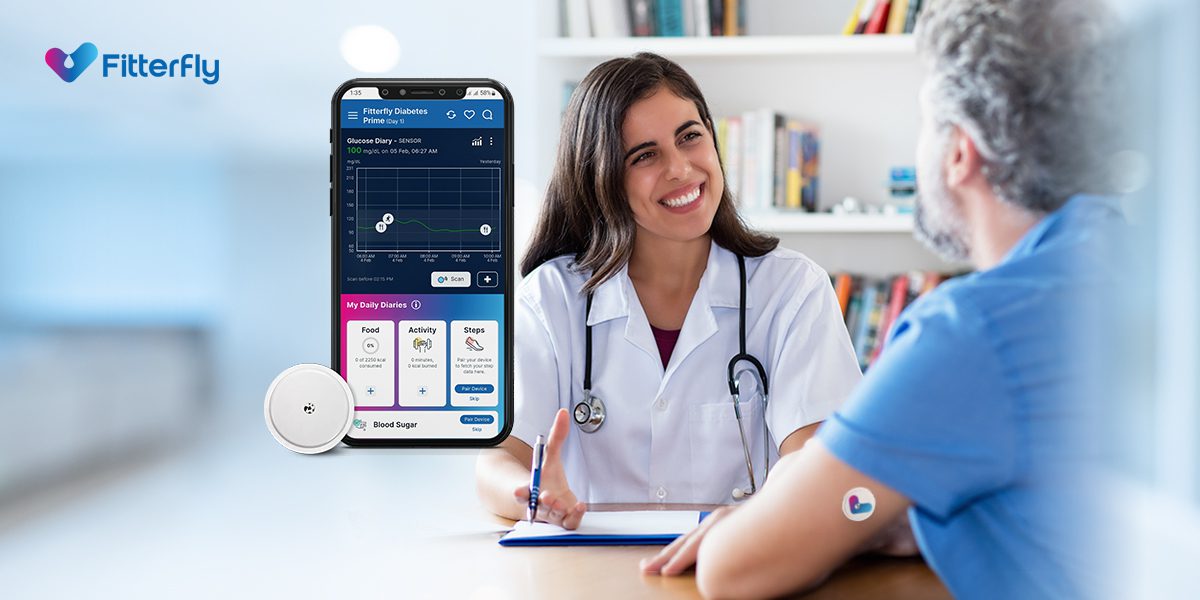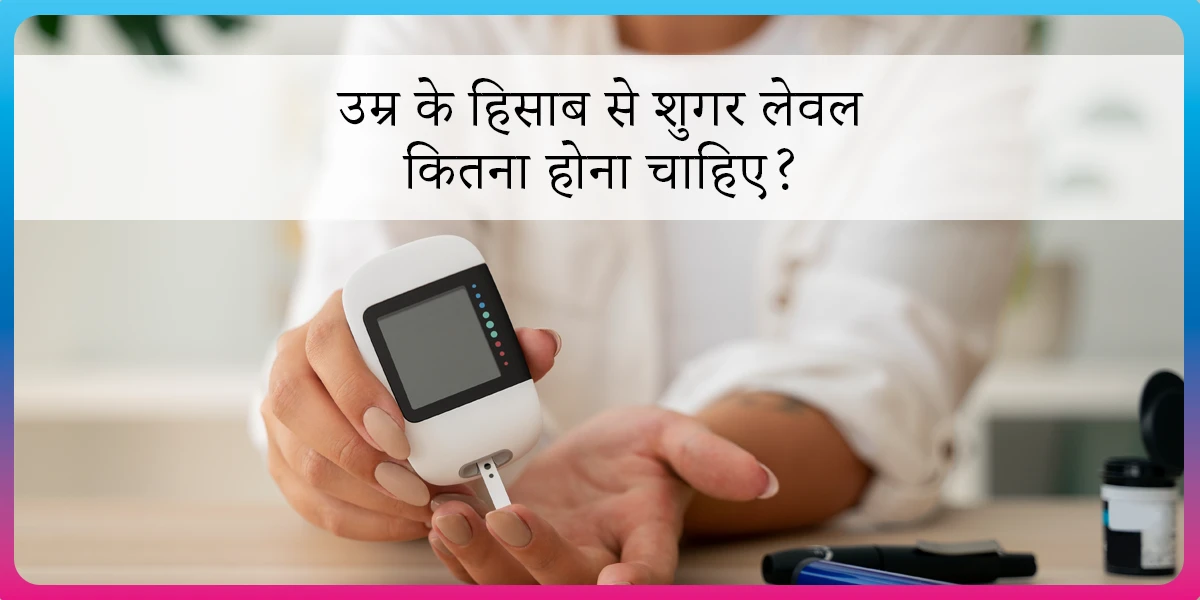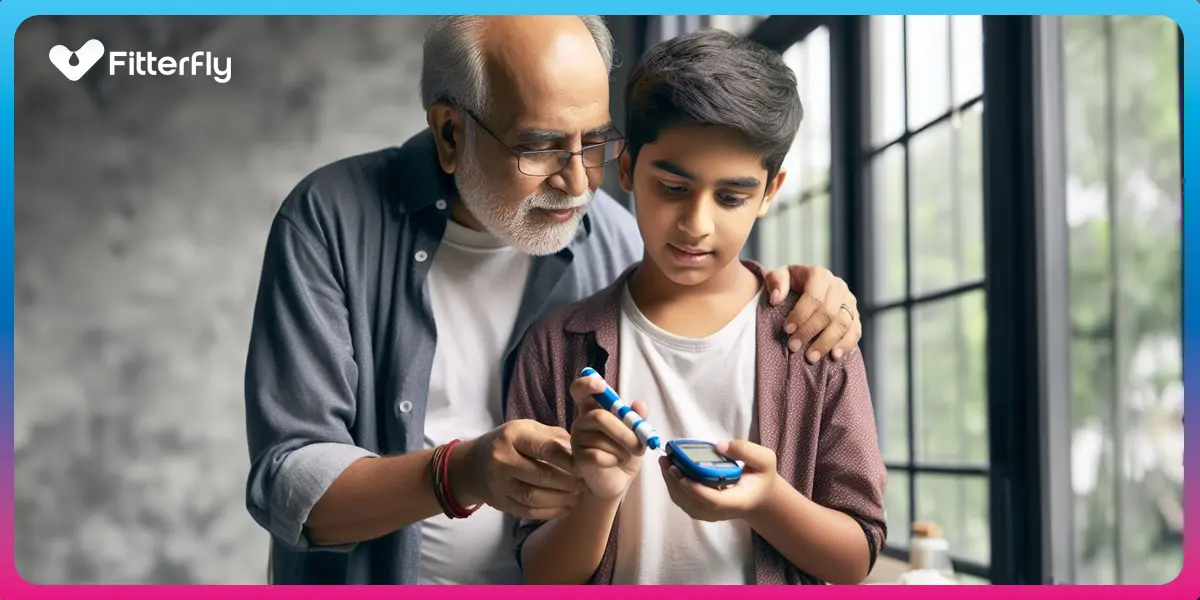Expert Insights on CGM Devices in Diabetes Care from Fitterfly’s Webinar

The latest World Health Organisation report on Diabetes in India states that 77 million adults in the country are living with Type 2 Diabetes, while another 25 million people currently fall in the prediabetes range.
Continuous Glucose Monitoring (CGM) devices are a valuable tool for people with diabetes, allowing them to closely track their blood glucose levels, make informed treatment decisions, avoid dangerous blood sugar fluctuations, and reduce the risk of long-term complications.
CGM devices have significantly evolved since their inception in the 1960s. Initial devices were less accurate and had limited usage. However, technological advancements have greatly enhanced the accuracy and reliability of CGM devices, leading to their increased adoption among individuals with diabetes.
Fitterfly conducted an interactive webinar on 24th May 2023 to stress the advantages of continuous glucose monitoring in diabetes management. Dr. Arbinder Singal (Co-Founder & CEO, Fitterfly) and Ms. Shilpa Joshi (VP-Metabolic Nutrition, Fitterfly) led the discussion, while Dr. Neelesh Bhandari (VP-Physician Partnership, Fitterfly) moderated the event.
Here are the key takeaways from the webinar if you have missed the event.
Functioning and Accuracy of CGM Devices
Continuous Glucose Monitoring systems consist of a small sensor that is inserted under the skin, a transmitter that sends the sensor’s readings to a receiver or smartphone, and a software program that displays the readings.
Dr. Arbinder Singal explained that CGM devices utilise a microfilament which is inserted underneath our skin into the interstitial fluid. The filament samples the interstitial fluid every 15 minutes to deliver a continuous stream of blood glucose data.
Over a span of 14 days, the mobile application interpreting the signal from the CGM sensor can generate a total of 1344 readings (14 days * 96 readings per day = 1344).

In the earlier days, initial CGM devices did not meet clinical standards in terms of accuracy, with a Mean Absolute Relative Difference (MARD) value of around 20%.
However, the current generation of CGM devices demonstrates significant improvement, achieving MARD values of approximately 10%. This advancement enables scientific data analysis and, ultimately, effective diabetes management.
Use of CGM Devices in Medical Nutrition Therapy
The introduction of Continuous Glucose Monitoring devices has brought about a revolution in diabetes management. By analyzing the magnitude and duration of blood sugar spikes after meals, healthcare professionals can make adjustments to medication doses and recommend lifestyle changes, such as modifying dietary habits or incorporating new exercises into daily routines. These small but impactful adjustments can significantly enhance the amount of time individuals spend within their target blood sugar range.
Personalised Glycemic Response via CGM
Personalised Glycemic response by CGM can determine the fluctuation in blood sugar levels to individual foods, which is specific to every individual. Understanding of PGR helps people to avoid labelling any specific food item as completely diabetic-friendly or unfriendly.
On the contrary, it personalises the food for every individual keeping in mind their personalised Glycemic response. For example, millet may help in reducing blood sugar spikes in someone but may actually cause a higher spike in some individuals with diabetes.
Busting of Myths Related to Food Habits
Ms. Shilpa Joshi rightly termed CGM as the myth-busting device as it was successful in solving several myths associated with diabetic foods. One popular myth is the categorisation of idly as a safe food for diabetes due to its steamed and low-fat nature.

However, it has a high carbohydrate content and may lead to a sharp increase in blood sugar lever in some individuals. A similar hike in blood sugar levels is also noticed in food items like sandwiches and bakery products, which are perceived as healthy snacking options by many people. These myths can be effectively busted by using a CGM device and receiving instant readings after meals.
Challenges of Implementing CGMs in Practice
Both speakers acknowledged the high cost of CGM devices, a limited time frame of 14 days for sensors, data management, time management, and scientific interpretation of data are some of the major challenges faced by patients and doctors while implementing continuous glucose monitoring in diabetes management. Resolving these issues can lead to massive adoption of CGM devices in diabetes management.
Use of CGM in Other Disorders
In addition to diabetes management, CGM readings can also be helpful in the extensive management of other health conditions like weight loss, PCOS and general fitness. However, candidates need to be highly motivated to implement CGM data in health management.
CGM can be immensely effective for prediabetic individuals, as they can experience complete diabetes remission by incorporating lifestyle management based on CGM data.
These were some of the factors which doctors should consider while recommending CGM in diabetes management. You can watch the complete discussion in the video below.
About Us:
We are on a mission to fuel the global metabolic health revolution through the power of Digital Therapeutics (DTx). We partner with physicians to deliver advanced customised digital therapeutics solutions aimed at enhancing the health outcomes of their patients.
By partnering with Fitterfly, you can save time in your clinics, ensure continuity of care for your patients, get research publications and also enhance your revenue. To know more, please fill out the form below or call us at 080-47093933.
This blog provides general information for educational and informational purposes only and shouldn't be seen as professional advice.
Want to know how can Fitterfly enhance your practice and improve patient outcomes?












